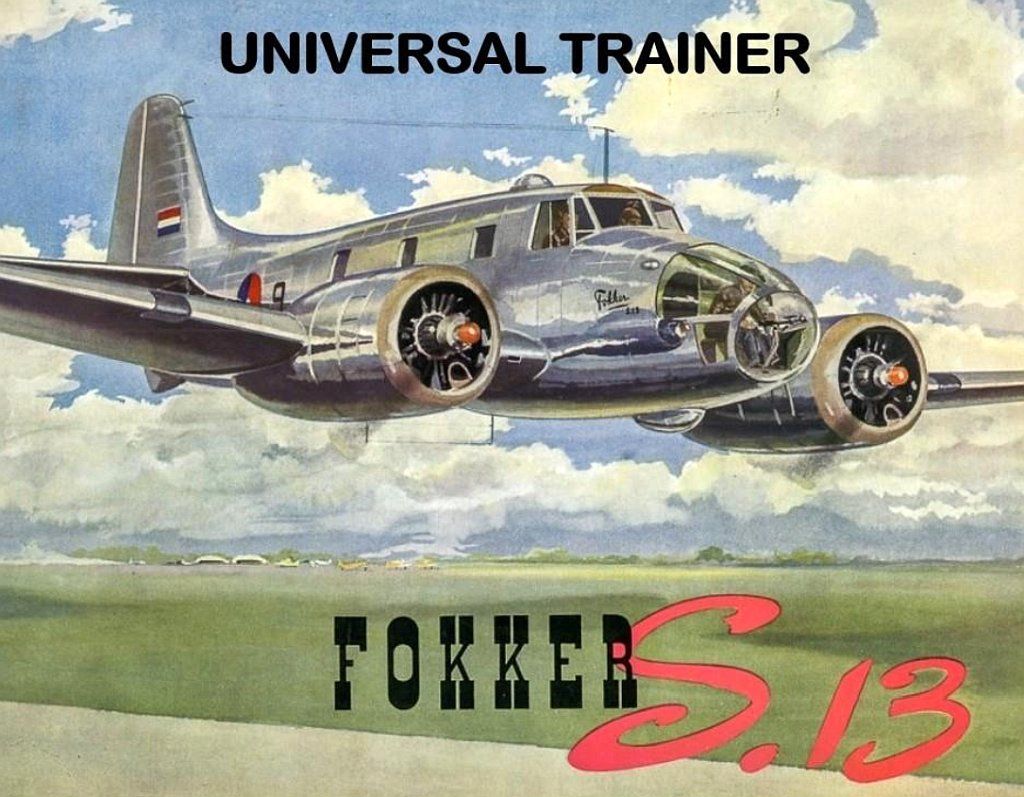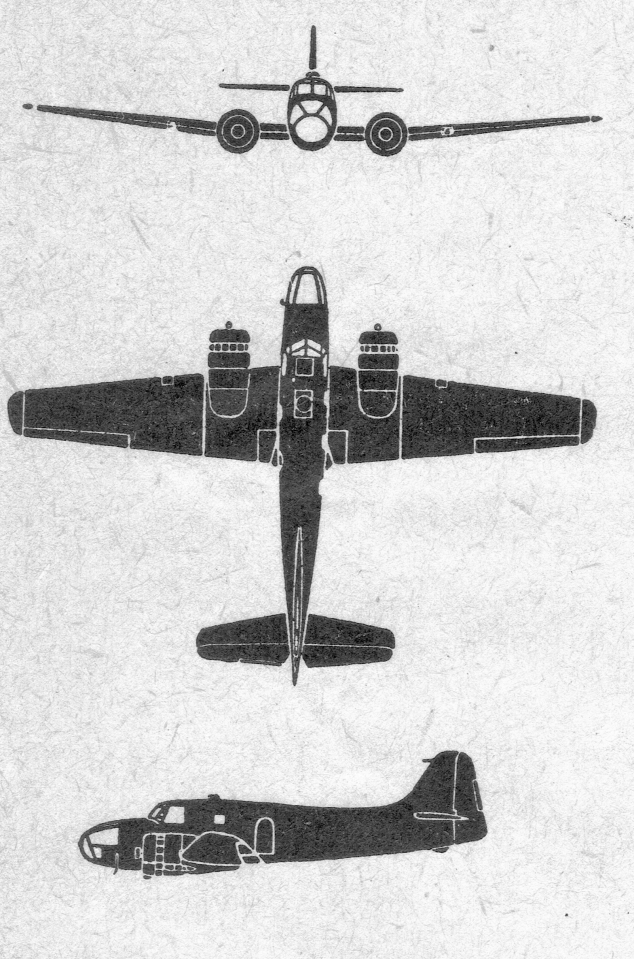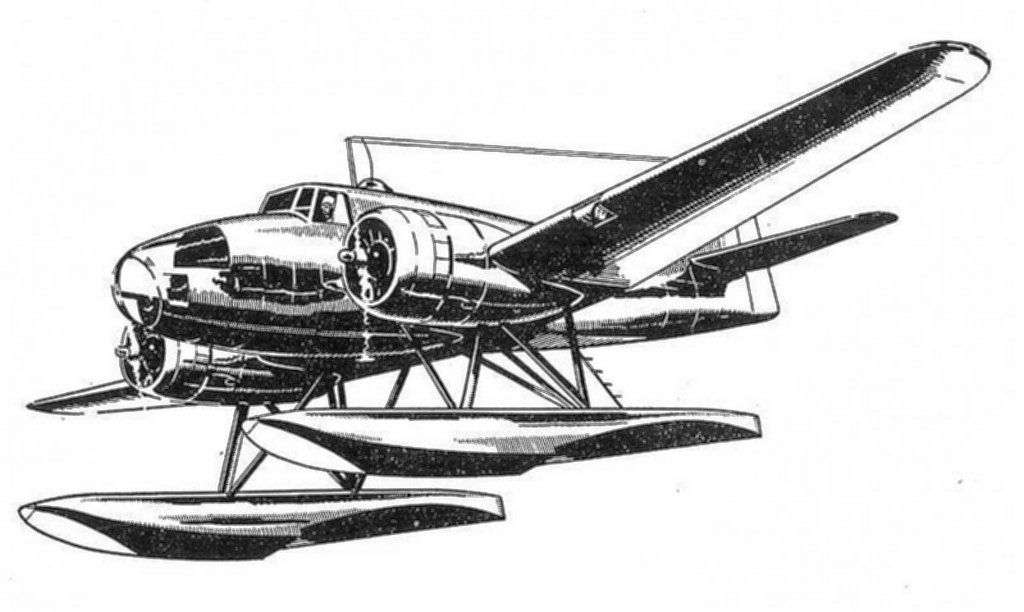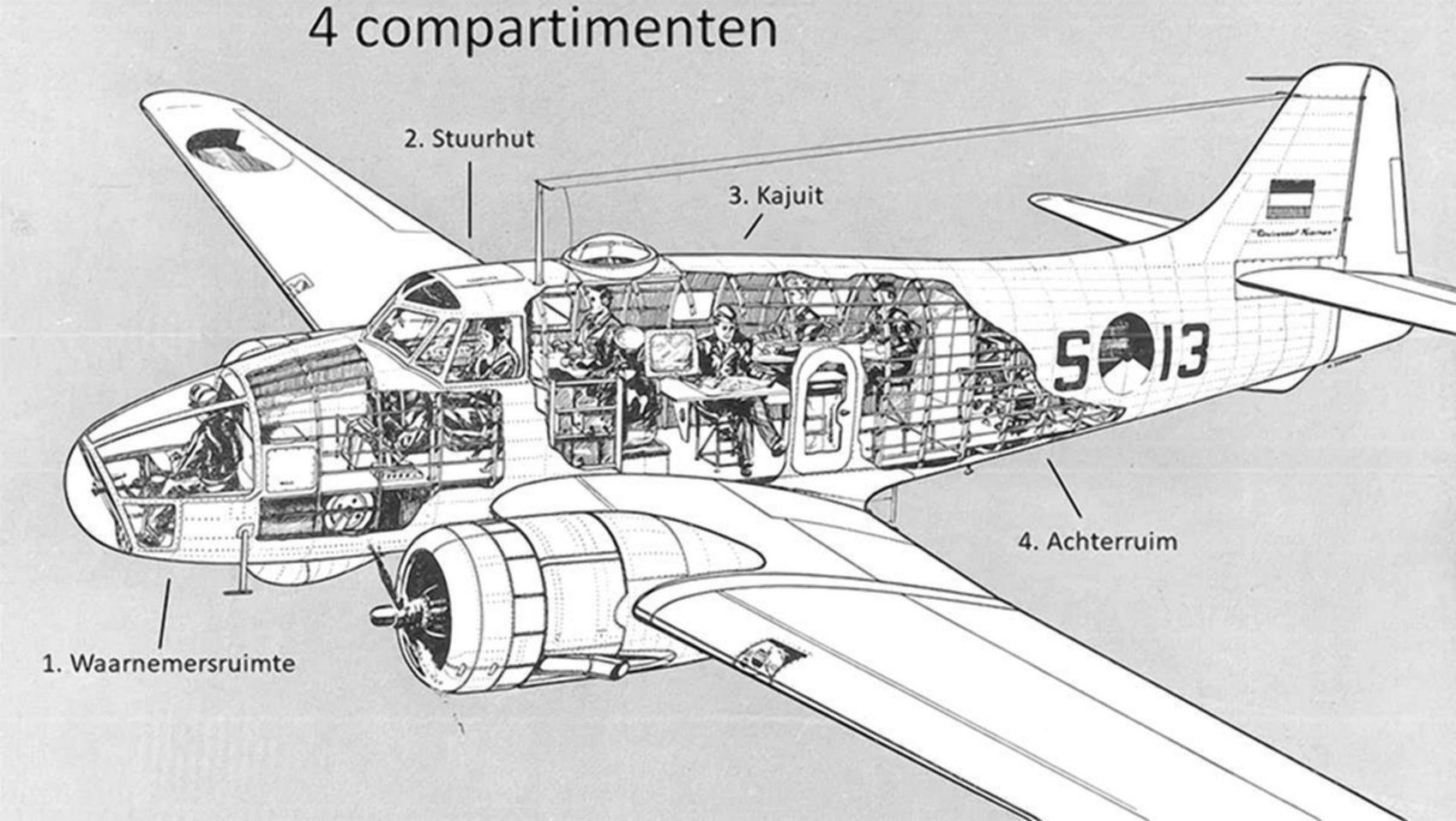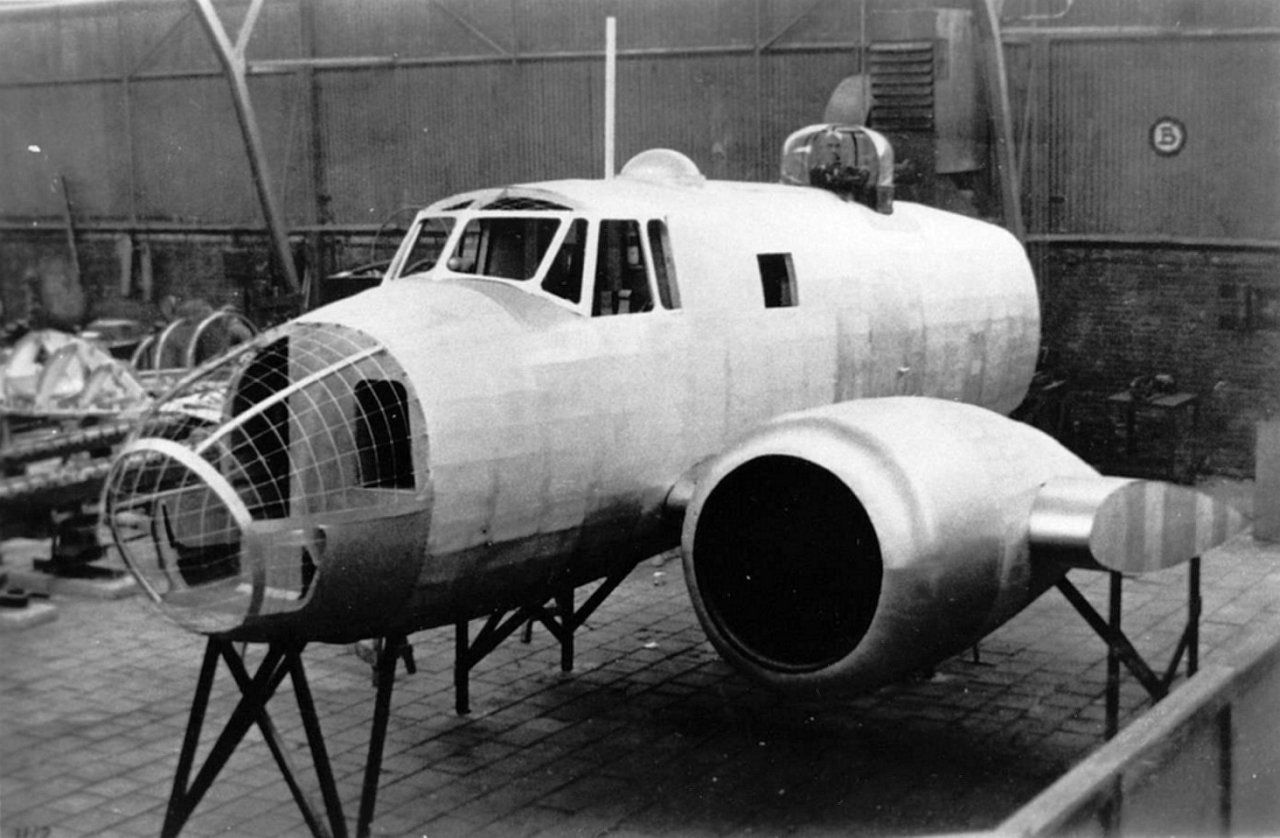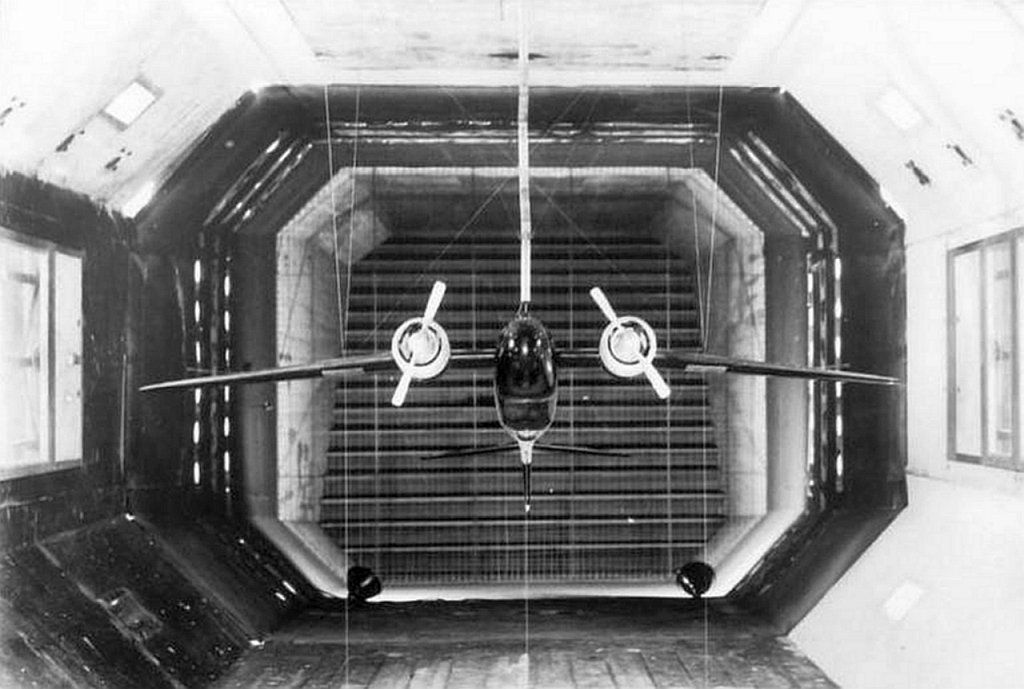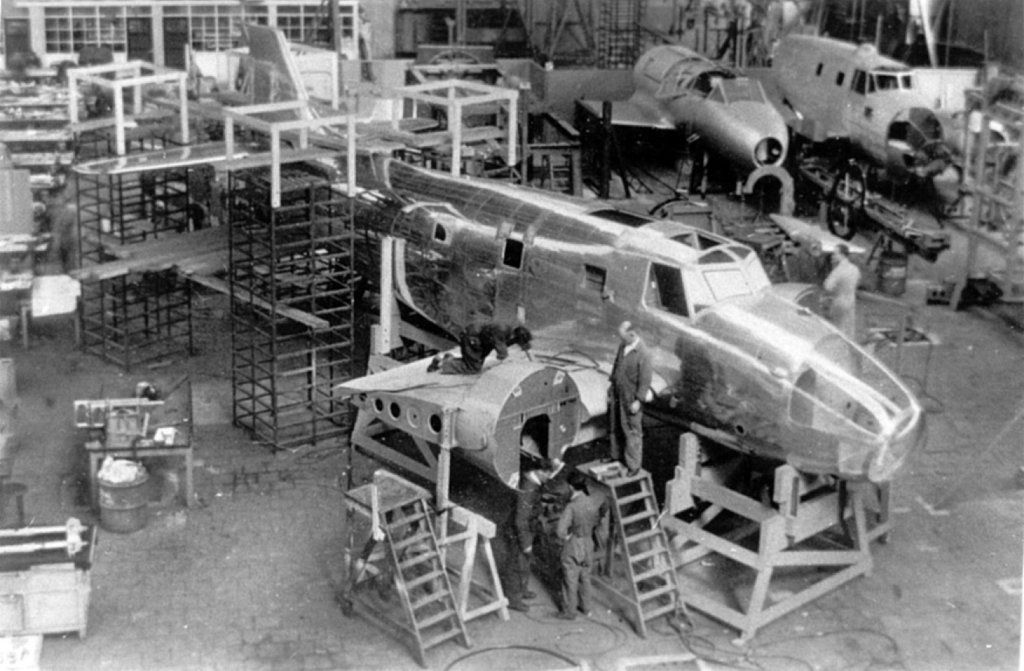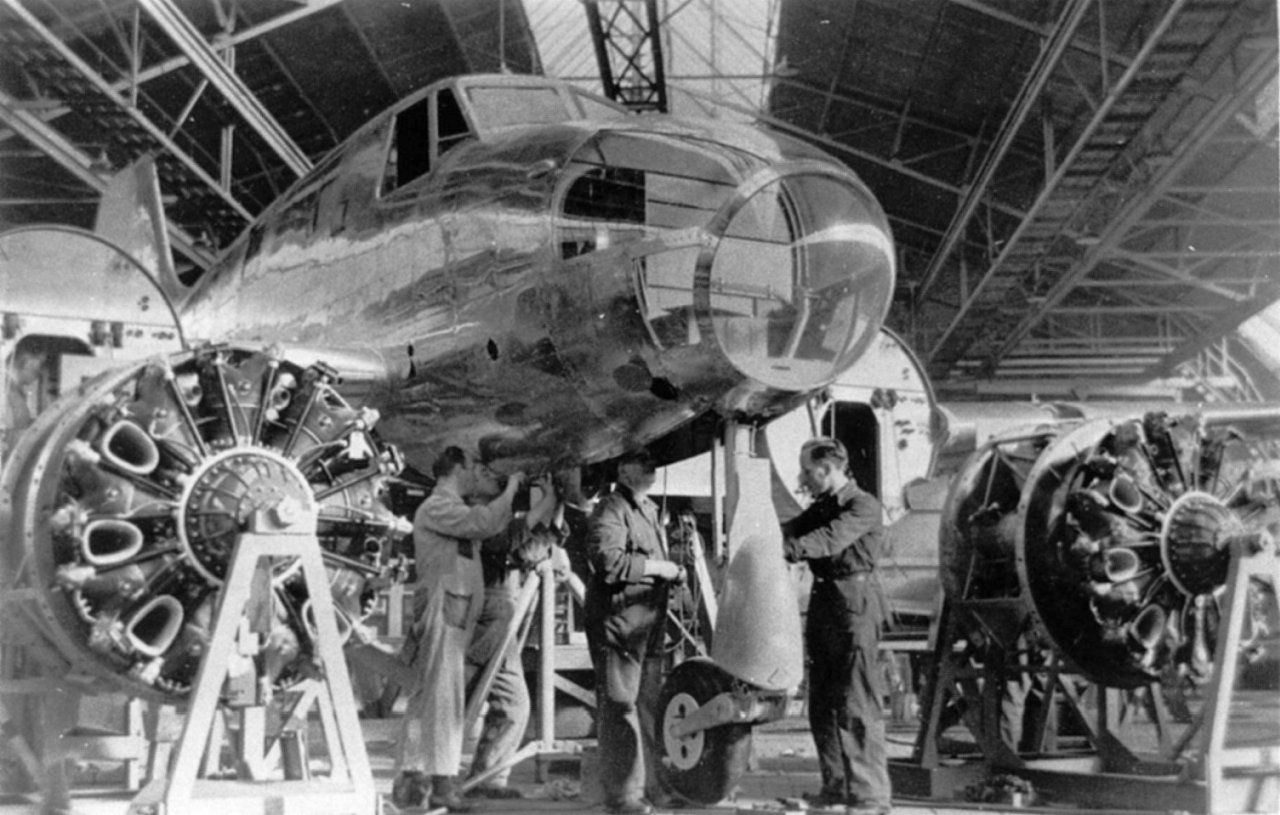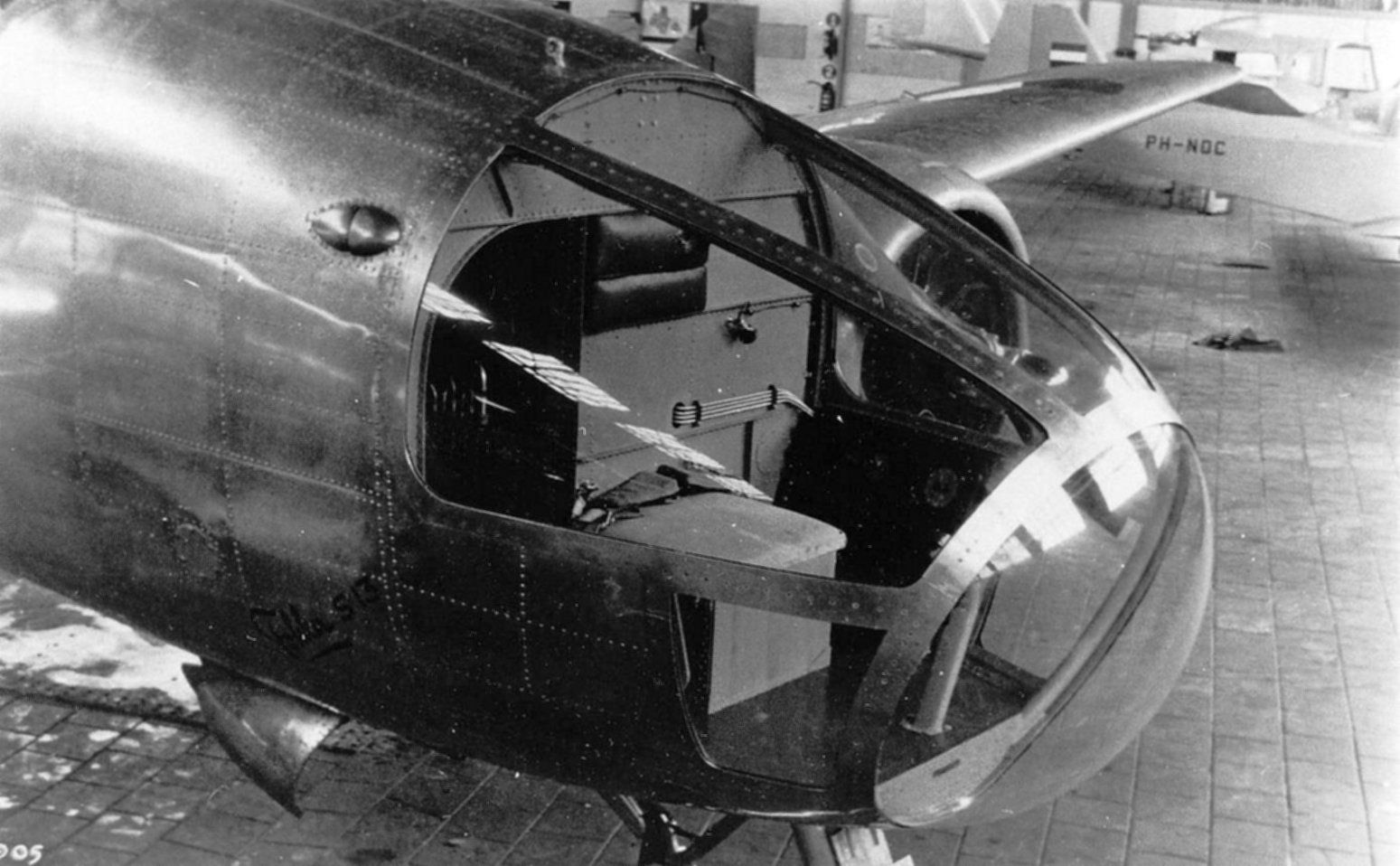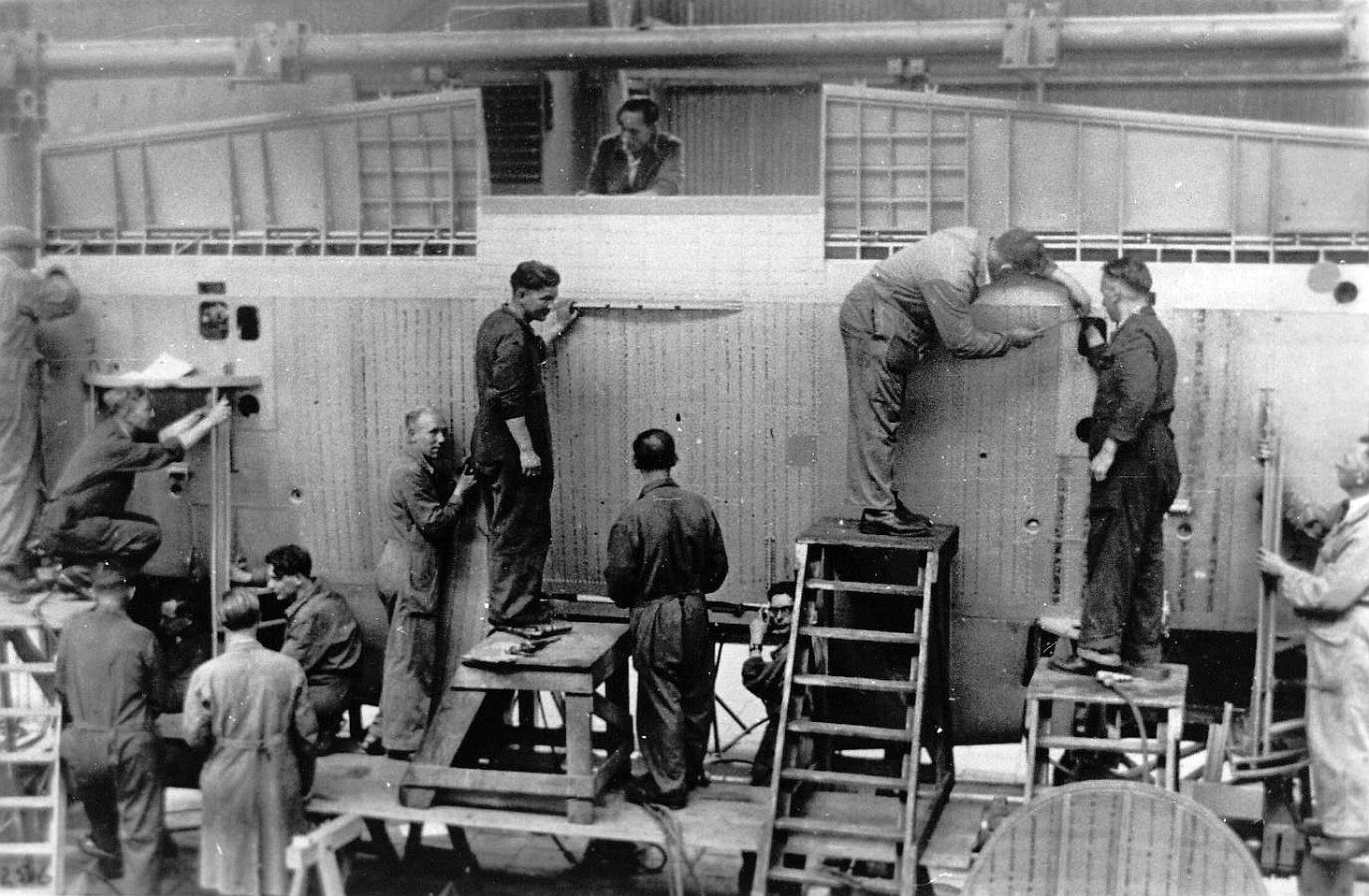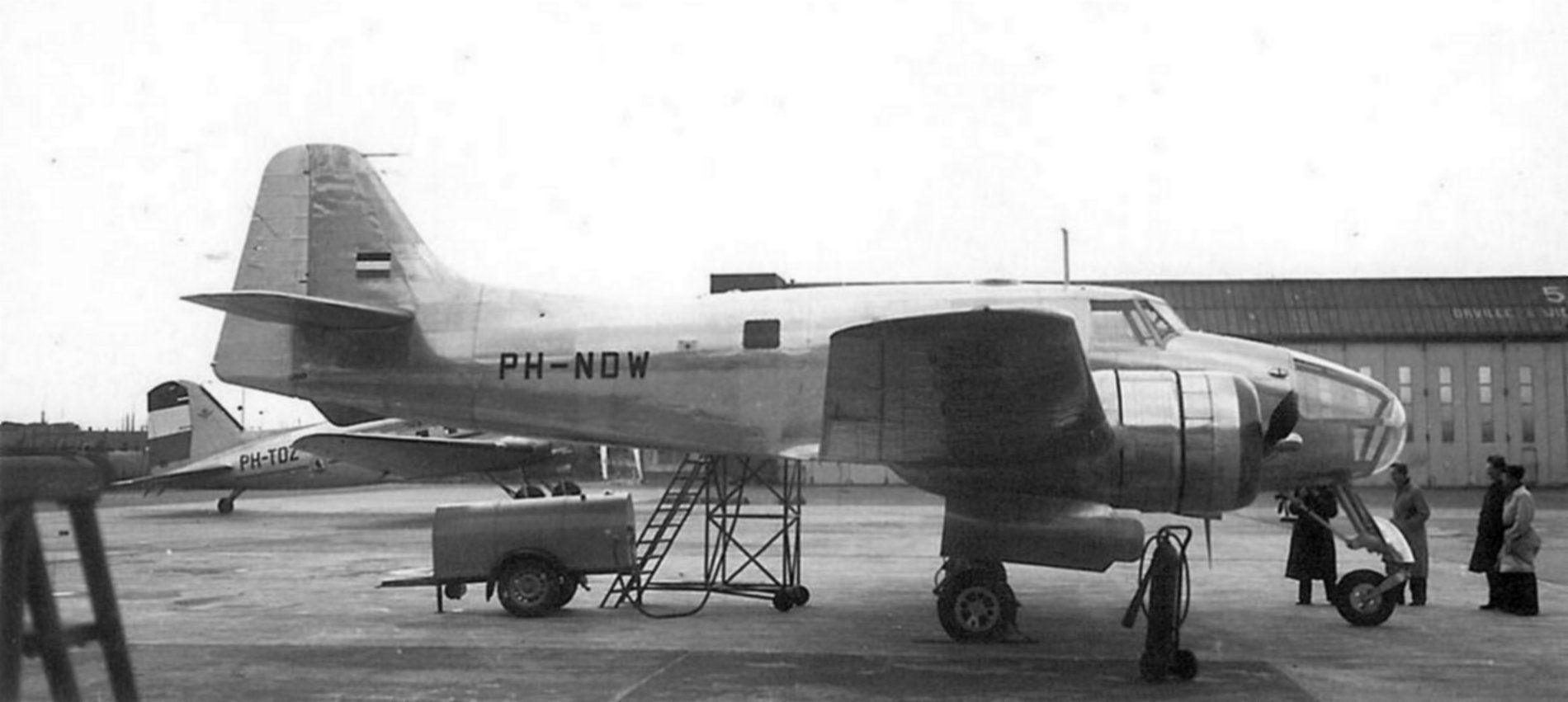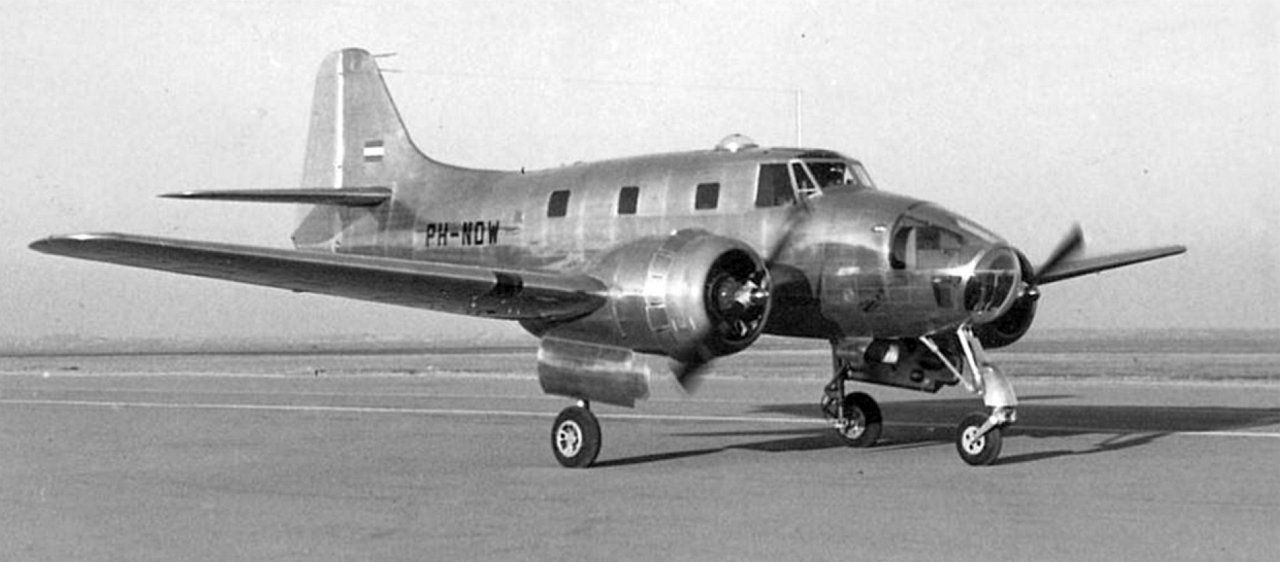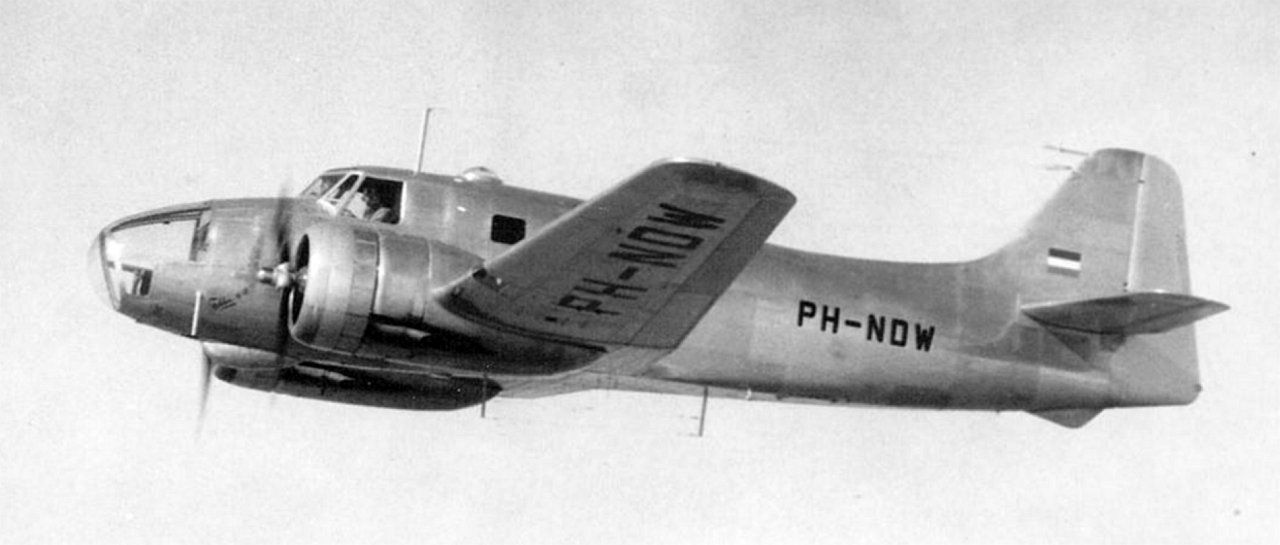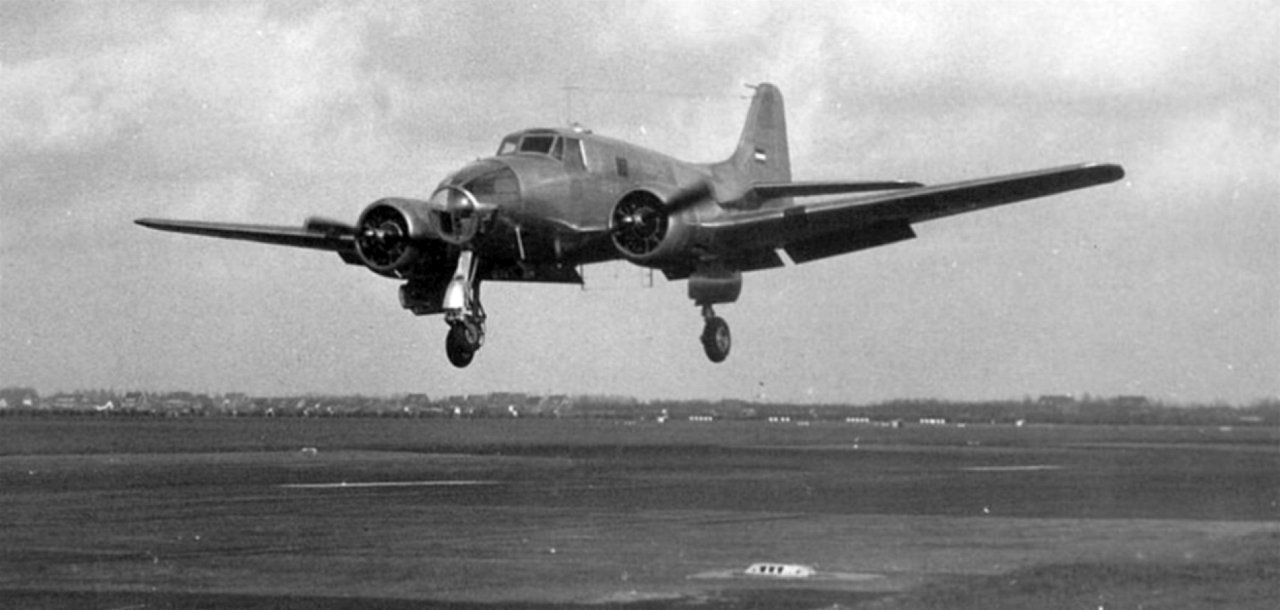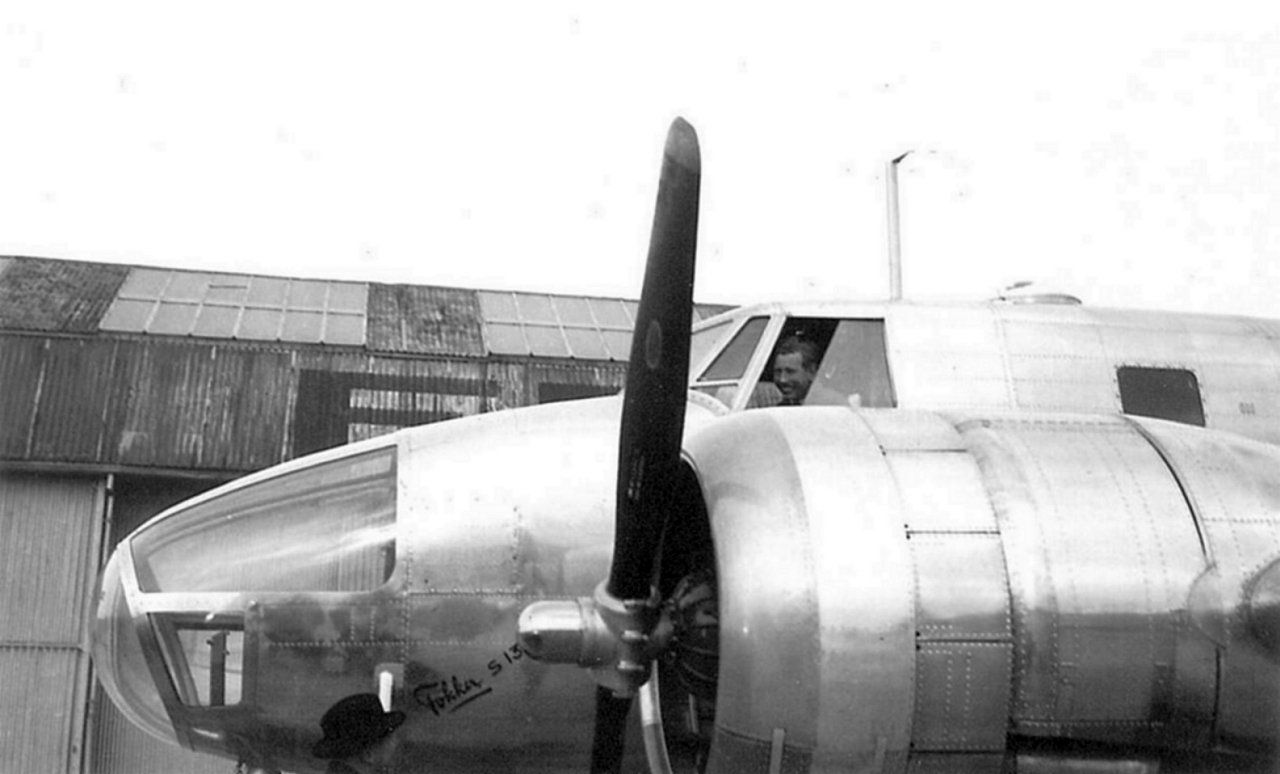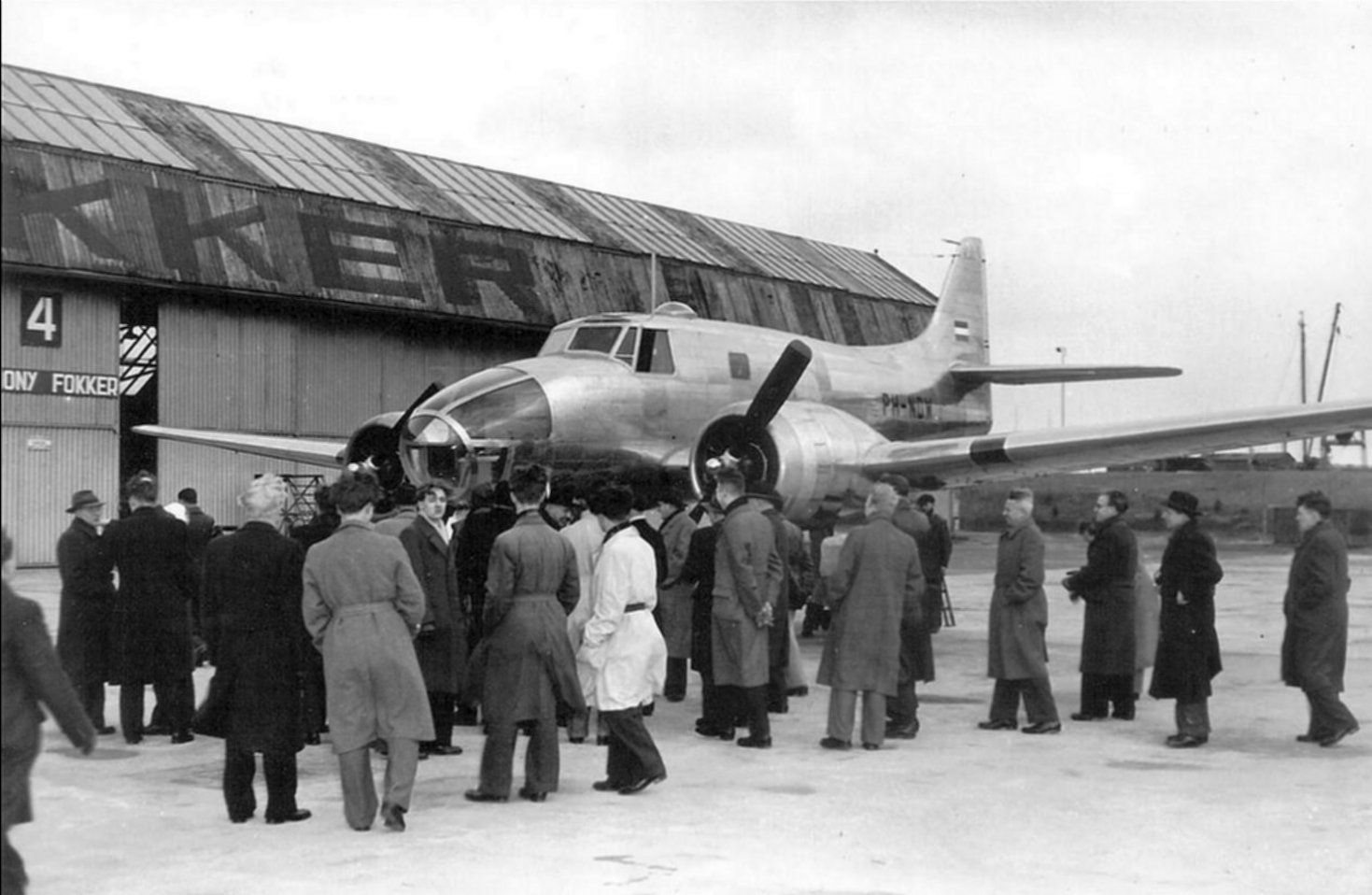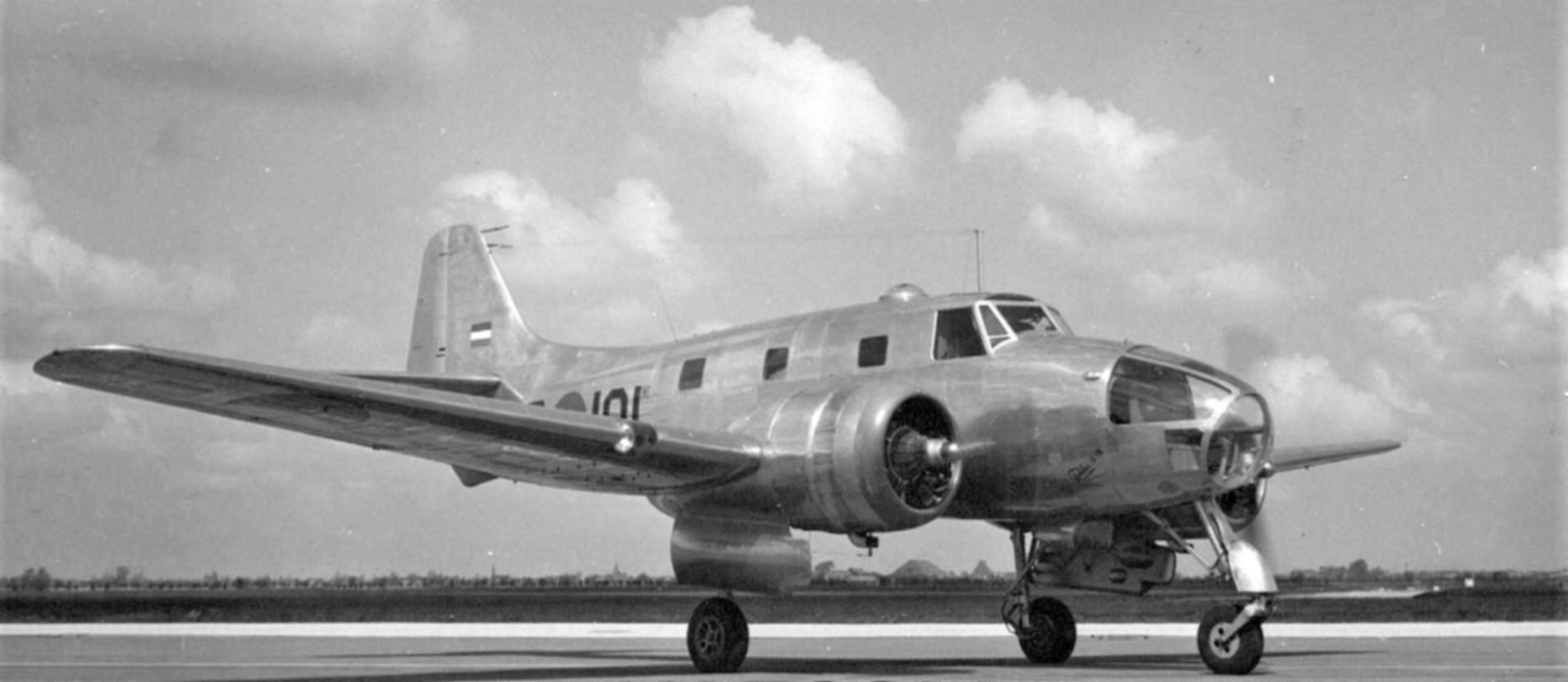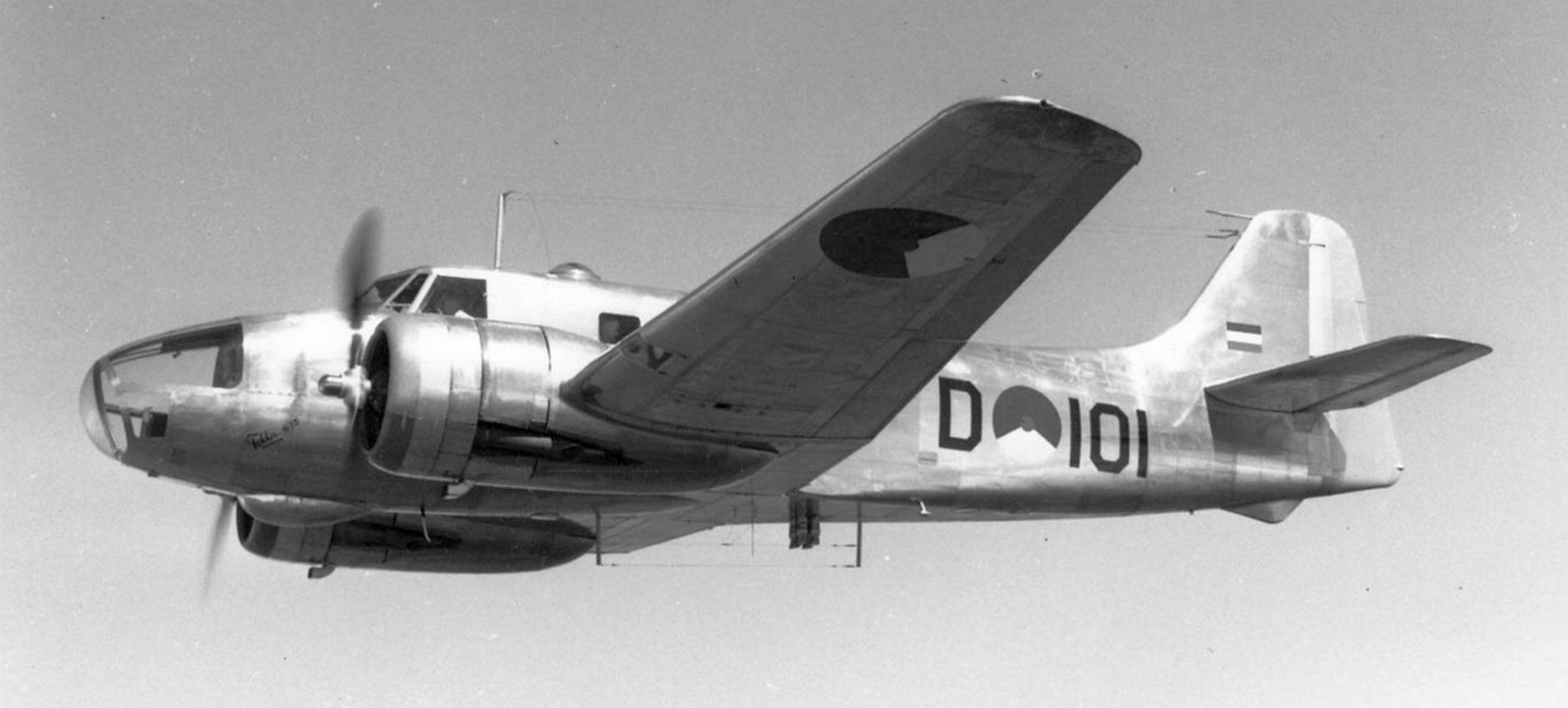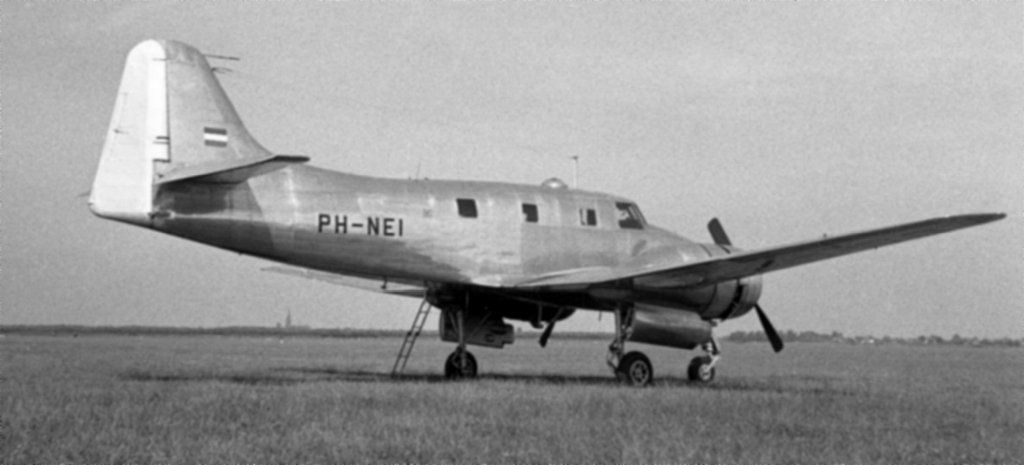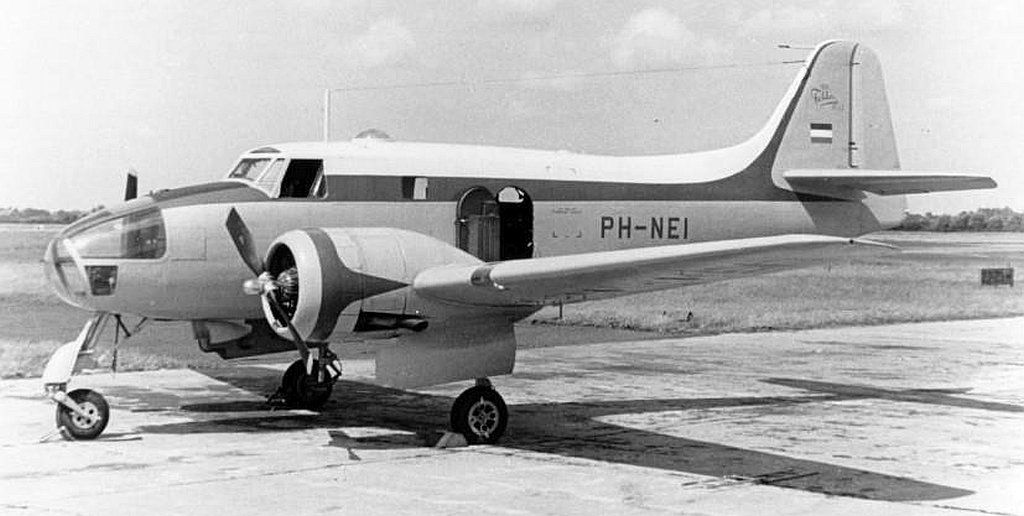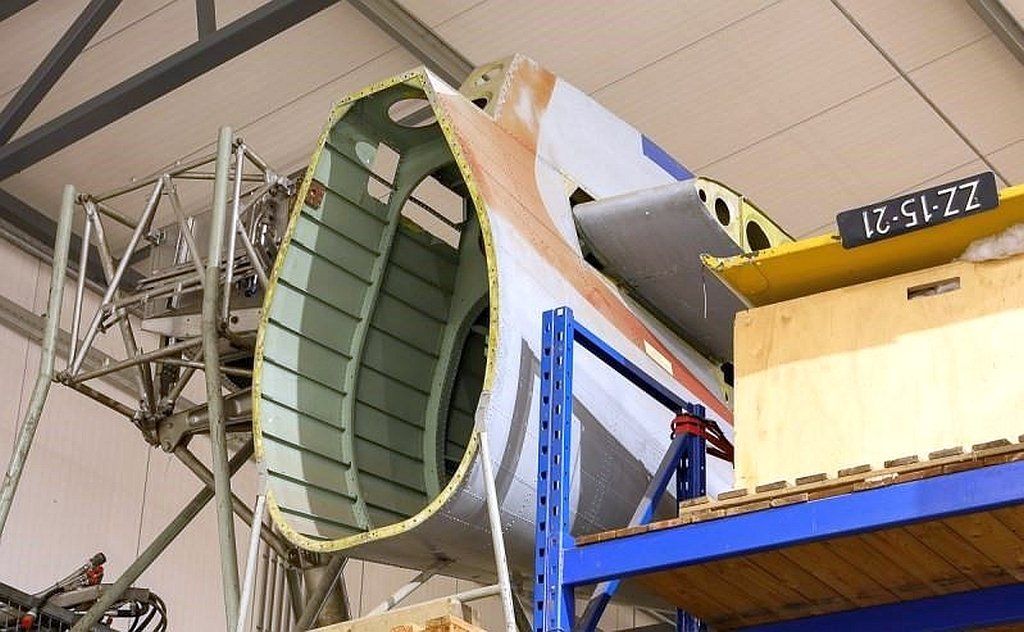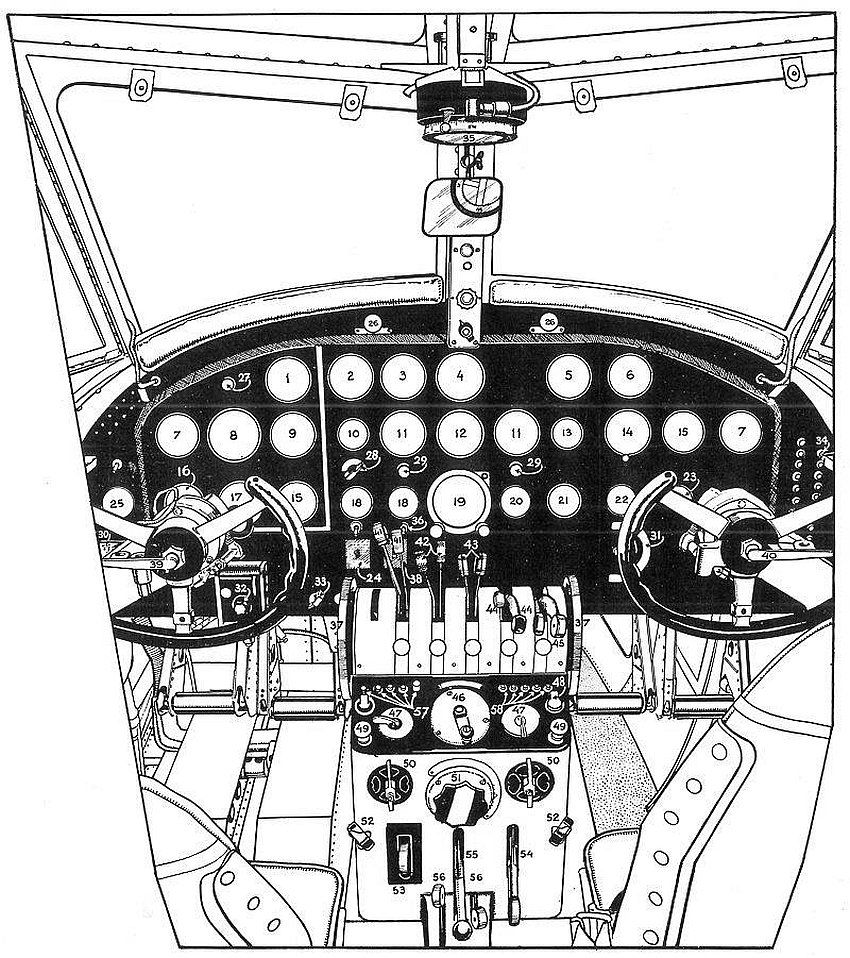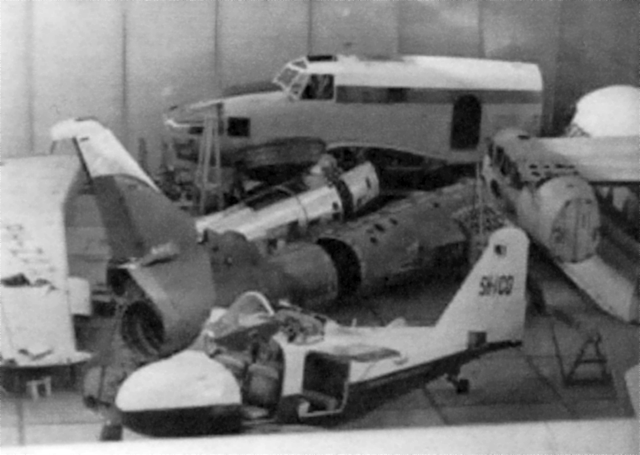Fokker S-13 Universal trainer
preliminary translation
The S-13 Universal trainer was developed as a navigation trainer and multi-engine trainer.
On December 13, 1946, representatives of the LSK, NIV and Fokker met for a meeting about the sales possibilities of the S.13.
It was determined, among other things, that there was a need for 123 copies for the Netherlands and the NE Indies with an annual supplement of 25 units.
The S.13 was a medium-sized all-metal low-decker, in the beginning the
S.13 two 450 hp engines. each and have a starting weight of 4500 Kg., with a price tag of 600,000 (guilders).
Both the LSK (Air Forces, predecessor of the Royal Netherlands Air Forces) and the NIV (the NIV was a branch of the NLL, National Aviation Laboratory and provided orders, financial resources and information in the field of aircraft development) contributed changes to the first design.
During the discussions that followed, consideration was given to making the design in question also suitable for the National Aviation School (RLS) and as a commercial aircraft for KLM.
It soon became clear that the LSK and KLM were so far apart in terms of the requirements that the aircraft had to meet that such a proposal offered no future.
The RLS also quickly dropped out.
After a number of changes to the S.13 design, the take-off weight was increased to 5500 Kg. and an engine power of 2X 600 HP was required.
When the prototype was virtually completed, the military side confirmed in writing on 1 June 1949 that “...it is by no means certain that the Air Force Staff will enter into negotiations with NV Fokker regarding the purchase of a number of S.13 aircraft. ...”
This letter therefore stated in so many words that there was no need for the S.13 at the LSK.
The LSK also did not buy a comparable aircraft abroad.
Under the MDAP programme, Mutual Defense Aid Program or Mutual Defense Assistance Programme, the United States supplied goods from its surplus from 1948 for the reconstruction of Europe after the Second World War.
For the LSK this meant that they could have access to many Beechcraft T-7 navigators and Beechcraft Model D-18 from the mid-1950s almost free of charge.
An attempt to equip an S.13 with floats and make it suitable for use in the Dutch East Indies was also unsuccessful.
Some of the photos and texts come from an unknown author from Amstelveen.
At the end of this page you will find a link to the PDF.
Click on the photo to enlarge the photo
Link to the PDF: Fokker S.13 Universal Trainer by an unknown author from Amstelveen.

